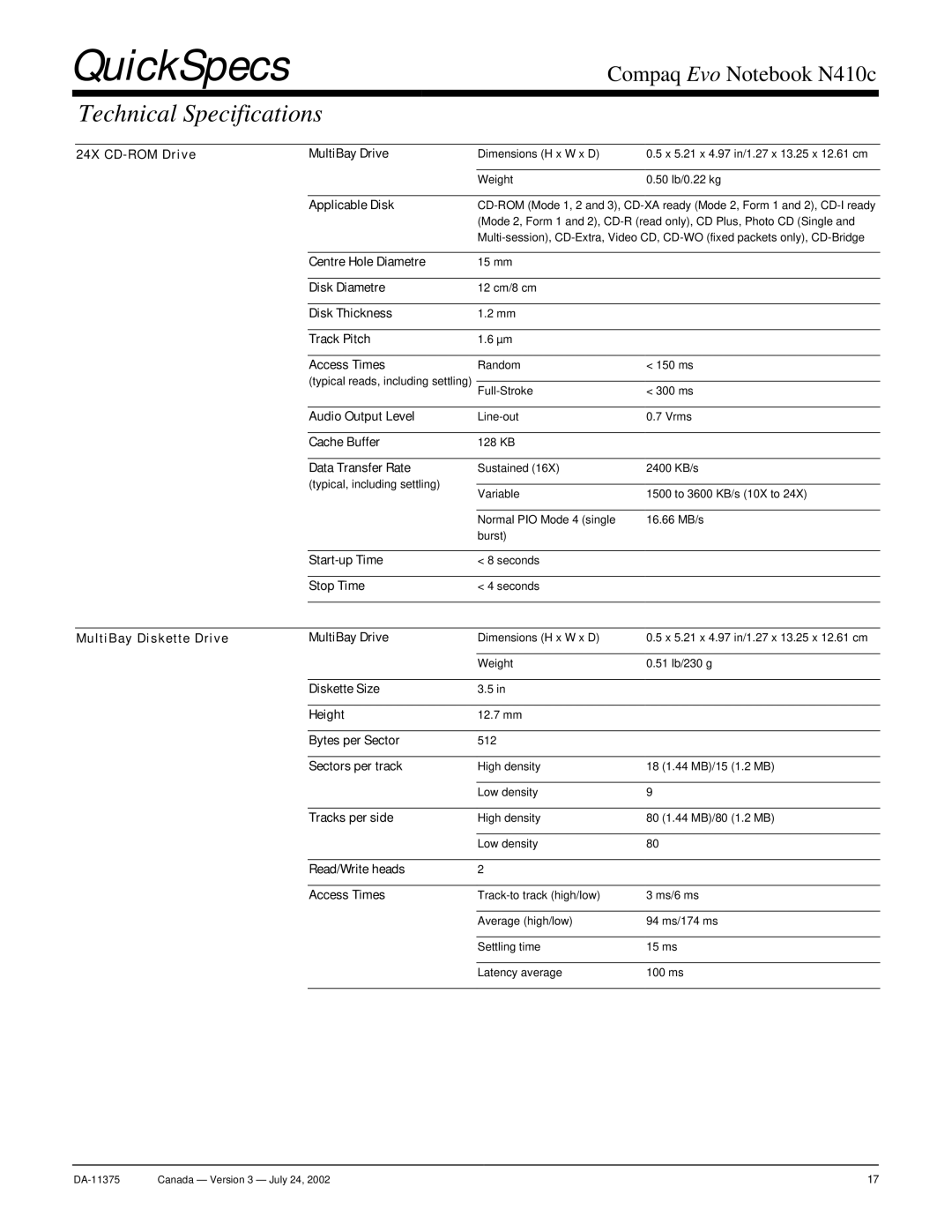RJ-11 specifications
The Compaq RJ-11 is a notable accessory that has played a significant role in enhancing the connectivity of various computing devices. Although often associated with telecommunication, the RJ-11 connector has found applications in the realm of computing, particularly in conjunction with modems and networking equipment. This article aims to delve into its main features, technologies, and characteristics, showcasing the importance of this unassuming yet vital component.One of the most salient features of the Compaq RJ-11 is its compact size, which allows for versatile deployment in various environments. RJ-11 connectors are typically 6.35 millimeters wide and have a modular design that enables easy insertion and removal. The connectors usually accommodate up to four wires, although the most common configurations utilize only two or three. This simplicity in design ensures that the connector is user-friendly, making it accessible for both technical and non-technical users.
In terms of technology, the RJ-11 connector operates on the principle of twisted pair cabling, which minimizes interference by twisting the wire pairs together. This technology is crucial in ensuring that data transmission remains reliable, especially over longer distances. The standard wiring configuration for RJ-11 involves using T568A or T568B wiring schemes, which specify the arrangement of the color-coded wires. These wiring standards ensure compatibility across different devices and networks.
Another defining characteristic of the Compaq RJ-11 is its dual functionality. While primarily used for telephone connections, it is also instrumental in connecting DSL modems to telephone lines, facilitating Internet access. This adaptability allows users to leverage existing telephone infrastructure for broadband connectivity, thereby enhancing network capabilities without the need for extensive additional wiring.
Moreover, the Compaq RJ-11 is designed to support various speeds of data transmission. With the rise of DSL technology, RJ-11 connectors have adapted to meet the demands of faster Internet speeds, accommodating both standard and high-speed connections. The robust nature of RJ-11 connectors ensures long-lasting performance, making them a reliable choice for a multitude of applications.
In conclusion, the Compaq RJ-11 connector epitomizes the blend of simplicity and functionality in modern connectivity. Its compact design, twisted pair technology, and dual-use nature make it an indispensable component in both telecommunication and computing environments. As technology continues to evolve, the RJ-11 will likely maintain its relevance, adapting to new standards and requirements in the realm of connectivity.

